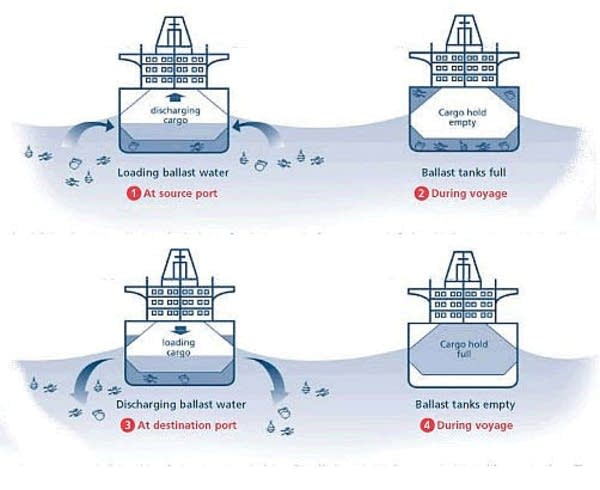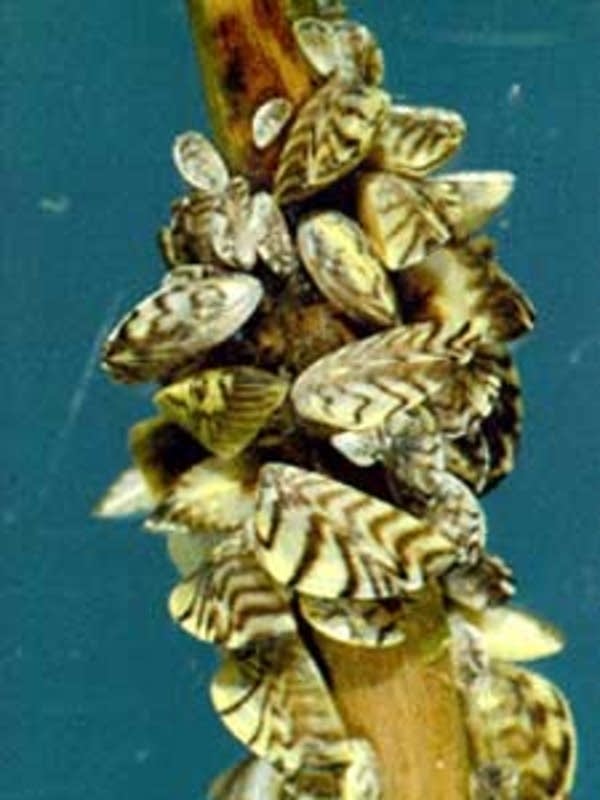Coast Guard proposes new standard for ballast rules

The U.S. Coast Guard Friday published stringent new limits aimed at halting the spread of invasive species arriving in the ballast water of ships.
Shippers welcomed the proposal, even though there's currently no way to meet the Coast Guard's proposed standard. Under the plan the rules would grow increasingly more stringent in the coming years.
Ships carry ballast water to stabilize a lightly-loaded or empty vessel. But that water has become a handy way for unwanted and often damaging plants, animals and other organisms to move from one part of the world to another.
Without any national standard, states have been adopting their own ballast rules, one state at a time. That wasn't a good thing, according to Duluth Port Director Adolf Ojard.
Create a More Connected Minnesota
MPR News is your trusted resource for the news you need. With your support, MPR News brings accessible, courageous journalism and authentic conversation to everyone - free of paywalls and barriers. Your gift makes a difference.
"The Coast Guard has done an outstanding job, but they have taken a lot of time to get them done," Ojard said. "I wish they had had this in place several years ago."
In the Duluth harbor, ballast is blamed for bringing dozens of destructive species. Great Lakes states spend an estimated $200 million a year fighting invasive species like zebra mussels that clog water intakes.

Minnesota adopted a ballast permit system a year ago, but Wisconsin has been phasing in a standard that is far more strict than Minnesota's. The dual standards were a potential nightmare for ships visiting the Duluth Superior harbor.
Ojard said the Coast Guard's nationwide standards could be the solution that prevents a patchwork of different state regulations.
"This is what the industry has been looking for. It's what we need," Ojard said.
The Coast Guard regulations start at the same level as the current International Maritime Organization standard, but would be more restrictive by 2016. Under the second phase, for example, ballast water could carry fewer than 1,000 bacteria and 10,000 viruses per 100 milliliters of water. That's a tough standard adopted so far by only the state of California.
Wisconsin Natural Resources Director Matt Frank said he's encouraged, and that the best way to address the problem of aquatic invasive species is through a strong national standard.
With a standard that goes beyond Minnesota's, the state could get out of ship ballast regulation, according to Jeff Stollenwerk with the Minnesota Pollution Control Agency.
"The proposed Coast Guard regulation does not appear to preempt state regulations, but ideally it would eliminate the need for state regulatory programs." Stollenwerk said.

Stollenwerk said the standards are generally in line with what state regulators had wanted, although it remains to be seen if the tough timeline can actually be hit. There's still no proven technology that will cleanse ballast water at the level of the Coast Guard's final standard.
"It's one thing to set a number, but another thing to actually be able to measure down to that number," Stollenwerk said. "So it appears the Coast Guard regulation recognizes the need to invest a significant amount of resources into that work."
The Coast Guard has a fallback to reach a significantly higher standard if the intended standard in 2016 proves impossible.
But the standards do reach a level pushed by environmental organizations, according to Chad Lord, with the National Parks Conservation Association.
"This is a standard that we need if we're going to protect the largest source of fresh drinking water for the millions that rely on the lakes for their livelihoods and recreation," Lord said.
But, he said, the time it takes to fully implement the regulations is too long. It could take until 2025 for all ships to meet the standard.
"I think we can do better, and we will be studying the proposal carefully to see if we can offer suggestions that will take what we think is a good start to the best finish possible," Lord said.
Another federal agency, the EPA, presented its own proposed general ballast permit last December, but critics said it wasn't tough enough. In February, EPA administrator Lisa Jackson said it was subject to change, and that the EPA would go with which ever rules were tougher - its own or the Coast Guards.
The Coast Guard rules were published today starting a 90-day public comment period. The rules could be formally adopted and in place some time next year.
